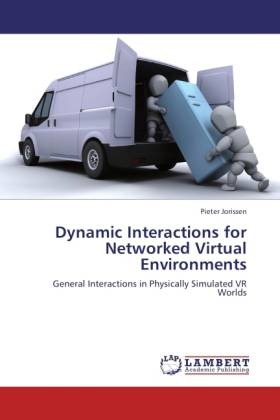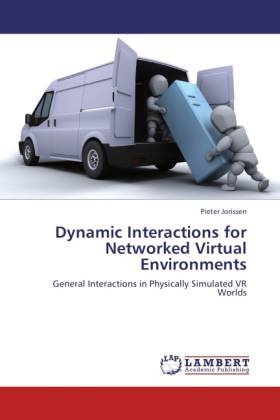
- Afhalen na 1 uur in een winkel met voorraad
- Gratis thuislevering in België vanaf € 30
- Ruim aanbod met 7 miljoen producten
- Afhalen na 1 uur in een winkel met voorraad
- Gratis thuislevering in België vanaf € 30
- Ruim aanbod met 7 miljoen producten
Dynamic Interactions for Networked Virtual Environments
General Interactions in Physically Simulated VR Worlds
Pieter Jorissen
Paperback | Engels
€ 113,45
+ 226 punten
Omschrijving
The field of networked Virtual Reality has been an active area of research in the past decades. The increasing power of contemporary computers and the lowering of hardware and connectivity costs permits people to have this technology available in their homes and workplaces. As a result, several applications and prototypes are successfully being used in several fields. Most of the developments have been technology driven and as a result one of the main components, interaction, is much less explored. In this dissertation we focus on realizing more realistic virtual experiences by narrowing the gap between real-life and virtual world interaction possibilities. In contrast to ad hoc approaches, we also seek to provide a more general and reusable solution for representing interaction possibilities allowing objects to contain physical properties and actions as well. By combining realistic simulation with our dynamic interaction mechanism, much more lively virtual worlds can be achieved with minimal effort, which can result in better virtual experiences and higher levels of presence if used properly.Finally, we show how a haptic travel method results in an improved feeling of immersion.
Specificaties
Betrokkenen
- Auteur(s):
- Uitgeverij:
Inhoud
- Aantal bladzijden:
- 212
- Taal:
- Engels
Eigenschappen
- Productcode (EAN):
- 9783845442853
- Verschijningsdatum:
- 26/08/2011
- Uitvoering:
- Paperback
- Afmetingen:
- 152 mm x 229 mm
- Gewicht:
- 318 g

Alleen bij Standaard Boekhandel
+ 226 punten op je klantenkaart van Standaard Boekhandel
Beoordelingen
We publiceren alleen reviews die voldoen aan de voorwaarden voor reviews. Bekijk onze voorwaarden voor reviews.










